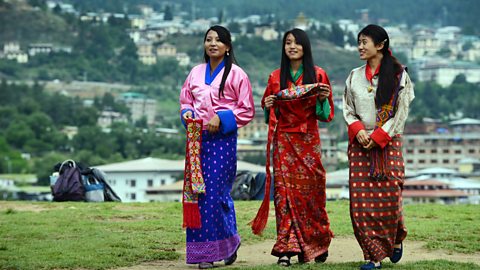A Collective Responsibility to Breathe Life into the Dying Bhutanese culture and tradition

The echoes of Bhutanese tradition are now facing the challenges of modernity. The once-cherished tradition of ‘Lolay,’ a cultural celebration steeped in Bhutanese identity, finds itself at a crossroads as changing times pose threats of waning. This age-old practice, a thread weaving through the cultural tapestry of the society and country, must not be allowed to fade away. It is imperative to preserve this unique celebration, ensuring its continuity for generations to come.
‘Lolay’ is not merely a festival; it is a cultural identity deeply rooted in the hearts of the Bhutanese people. The practice involves the recitation of verses in prayers accompanied by the offering of abundant good wishes, symbolizing prosperity, peace, and happiness for the families in the households they visit throughout the year. However, as Bhutanese communities adapt to the influences of modern times, the essence of ‘Lolay’ faces challenges, such as unpreparedness and occasional negative reactions.
To keep this time-honored tradition alive, individuals play a crucial role. It is essential for community members to recognize the significance of ‘Lolay’ in preserving their cultural heritage. Understanding the verses, participating in the prayers, and embracing the positive spirit behind the celebration are steps that individuals can take to ensure the tradition lives on. Education programs within communities can enlighten the younger generation about the cultural value and importance of ‘Lolay,’ fostering a sense of pride and connection.
Moreover, fostering a sense of inclusivity is vital. Encouraging community members to actively participate in the celebration, regardless of age or background, can strengthen the bonds that tie generations together. Traditional practices often thrive when there is a shared sense of ownership and involvement. Initiatives like community workshops, where elders can share their experiences and stories related to ‘Lolay,’ can serve as a powerful means to bridge generational gaps and instill a deeper appreciation for the tradition.
Government intervention is equally essential in preserving cultural practices like ‘Lolay.’ Policymakers should recognize the value of these traditions as integral components of the national identity. Establishing cultural preservation programs and allocating resources for the documentation and promotion of traditional practices can go a long way. Collaborations with cultural organizations and local communities can be fostered to ensure that the authenticity of ‘Lolay’ is maintained, even as society evolves.
Incentivizing community-based initiatives through grants and support can empower local groups to organize and sustain cultural events, thereby keeping traditions alive. Additionally, incorporating cultural education into the national curriculum can help instill a sense of pride and responsibility for preserving Bhutan’s rich cultural heritage among the younger generation.
‘Lolay’ and similar traditions stand as a beacon of Bhutanese identity, and its preservation is a collective responsibility. As communities adapt to changing times, it is crucial to embrace the past, ensuring that the threads of tradition remain unbroken. Individuals and the government must collaborate to create an environment where the celebration of tradition and culture not only survive but thrive. Only through collective efforts can we safeguard the cultural legacy that defines Bhutan and ensures that the celebration of Bhutanese tradition and culture continues to resonate through the ages.



